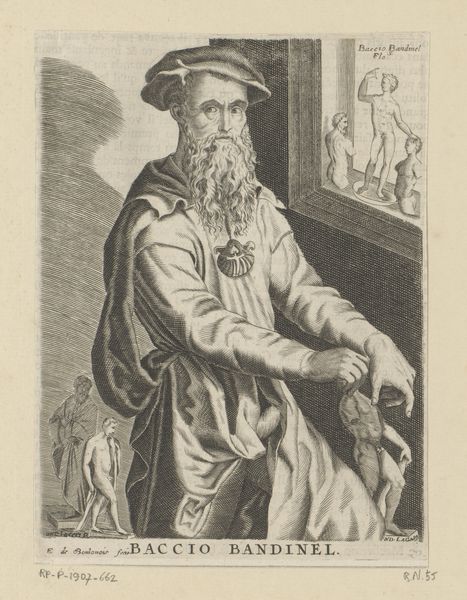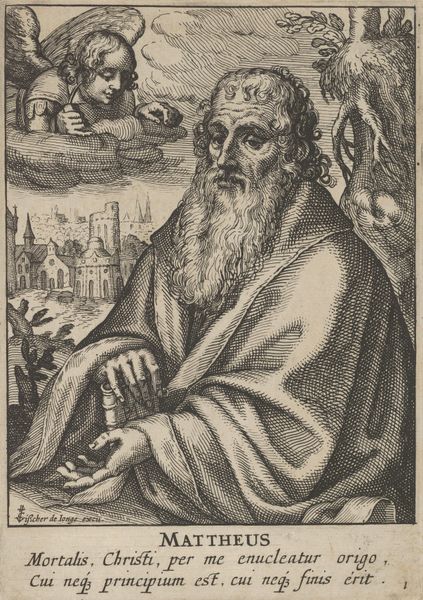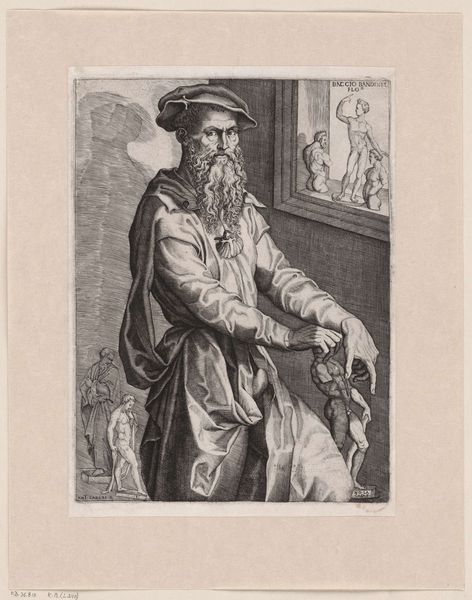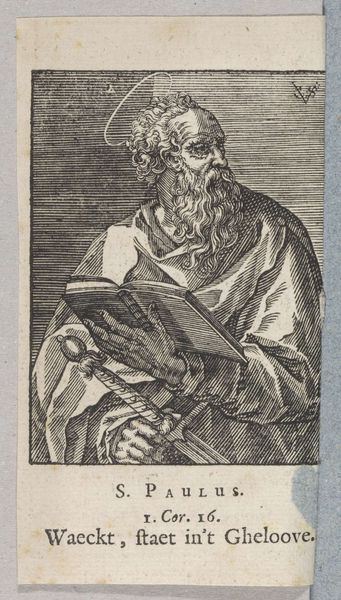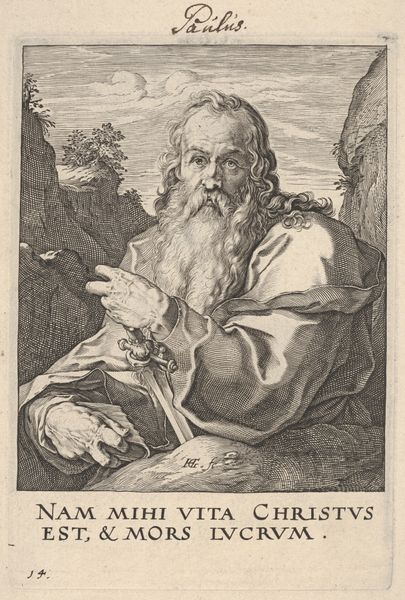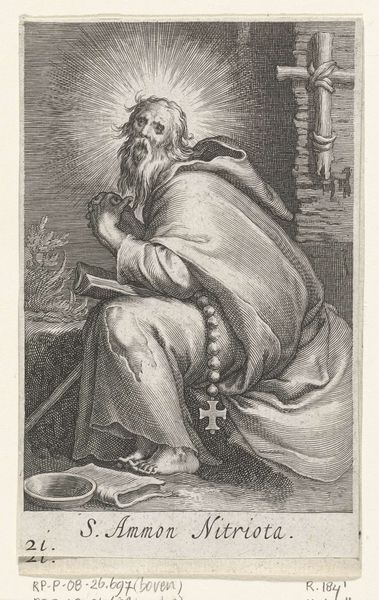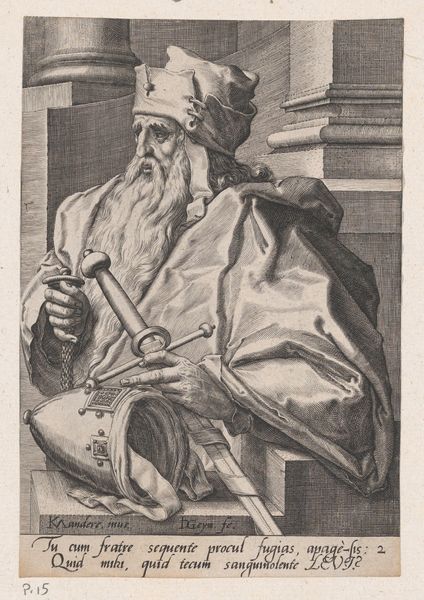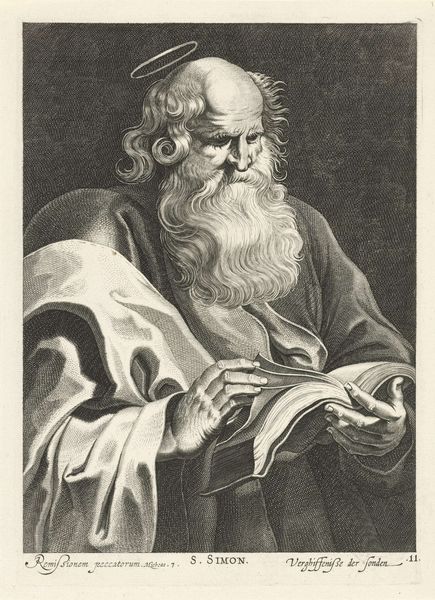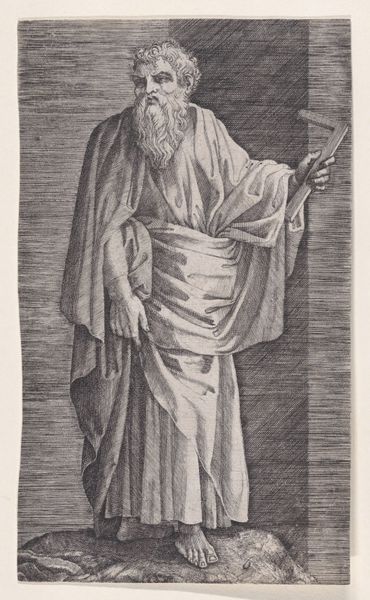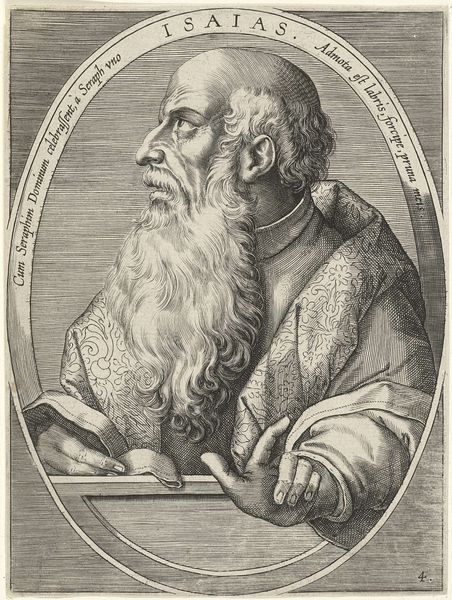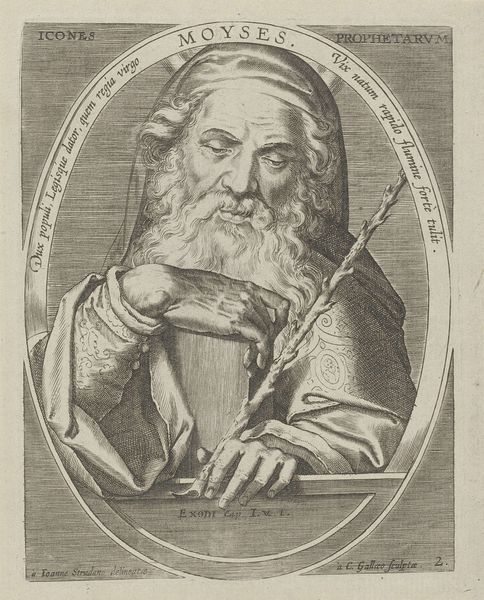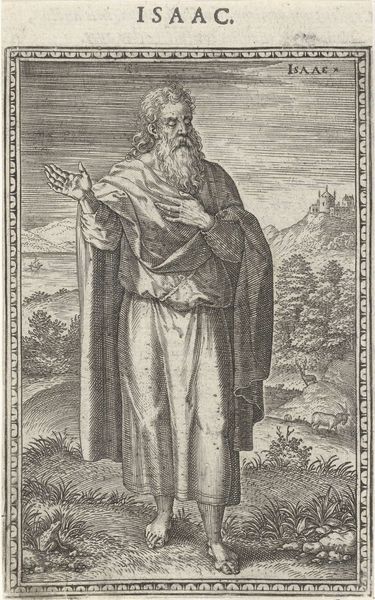
drawing, print, metal, etching, sculpture, charcoal
#
portrait
#
drawing
# print
#
metal
#
etching
#
charcoal drawing
#
sculpture
#
charcoal
#
history-painting
#
italian-renaissance
Dimensions: Sheet (trimmed): 11 9/16 × 8 11/16 in. (29.4 × 22 cm)
Copyright: Public Domain
Curator: Niccolò della Casa gives us, in this print from the mid-16th century, "Portrait of Baccio Bandinelli," now housed at the Metropolitan Museum. It presents the famous sculptor, but I'm struck by its peculiar feeling. Editor: There's a tangible intensity there. The etched lines, the hatching, they don’t just describe form, but almost sculpt the light across his face and robes. It emphasizes the materiality, but that makes the overall effect very dramatic. Curator: Bandinelli was, let's say, a controversial figure in Florentine art circles, often seen as a rival to Michelangelo. It’s tempting to read the sculptures placed around him, especially the ones behind, in relation to this competitive artistic environment. They function almost as stage props that situate him within a historical and institutional artistic discourse. Editor: Note how della Casa’s printmaking brings a very hands-on approach to Bandinelli’s sculpture, really delving into the creative process by mirroring it within another medium. You see him almost fondling this smaller sculpture, which seems like a stand-in for all of his works. I find the material layering compelling—metal on stone—almost intimate. Curator: Absolutely, the politics of artistic imagery were always complex. Displaying the artist among his creations like this surely elevates his status but also perhaps reveals the political maneuverings artists had to engage in within the Florentine court to gain power. Editor: There's a striking intimacy conveyed, as the artist looks back. This print captures that intense exchange, that act of making. But also in how that gets reproduced—how the process translates itself into how we think about these men who produced so much labor, so much product, during the Italian Renaissance. It is worth considering all the labor, time, and politics that make work like Bandinelli’s sculpture possible. Curator: Indeed. Looking at it through this lens reminds us that it isn't just about appreciating beauty, but acknowledging and understanding the conditions under which that beauty came into being, the social relations that art participates in and shapes. Editor: The social conditions are there to be analyzed in the material, yes. I now walk away from this piece considering art, class, the social nature of image production, and that interplay as a crucial means of evaluating our past.
Comments
No comments
Be the first to comment and join the conversation on the ultimate creative platform.

